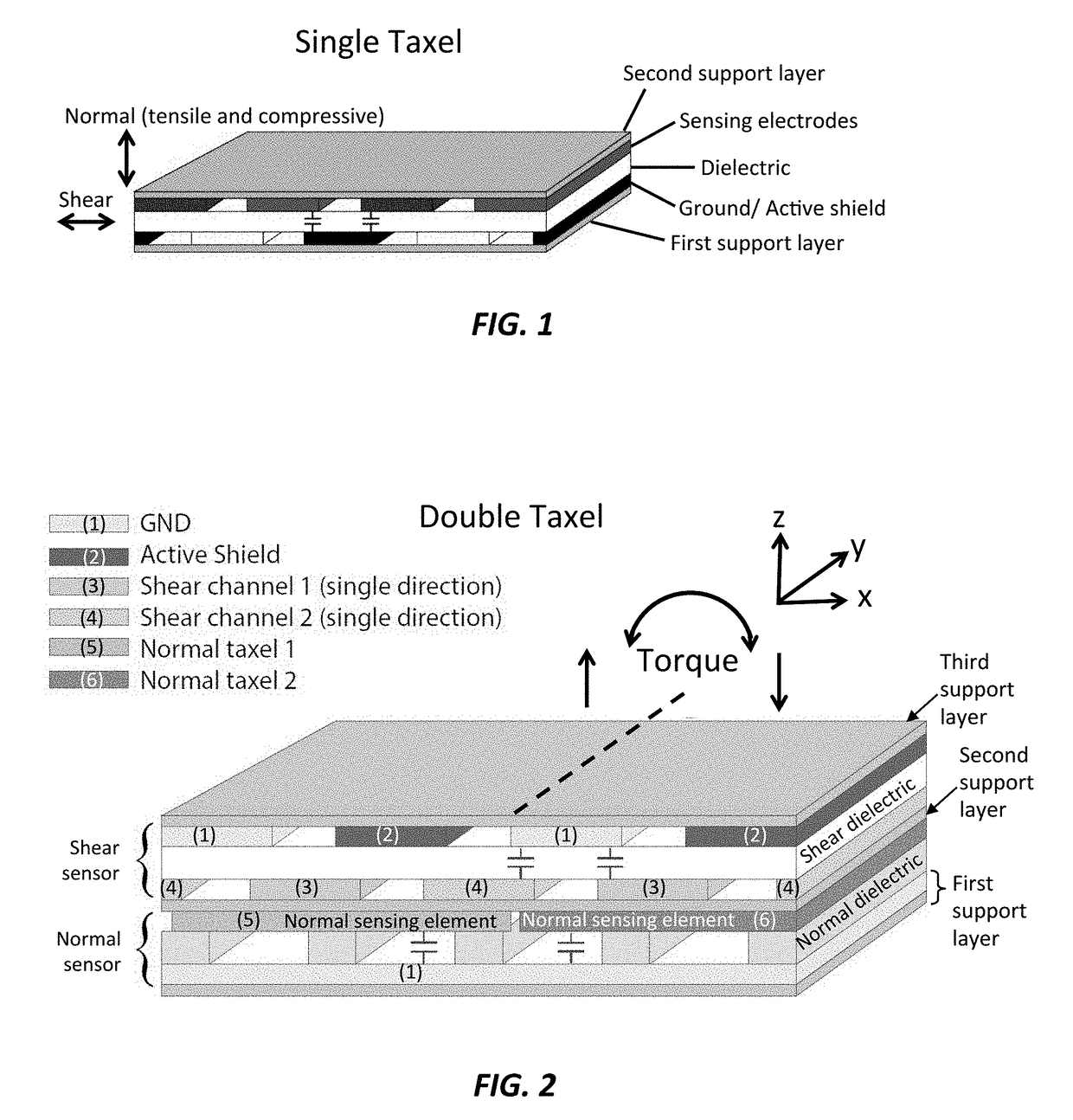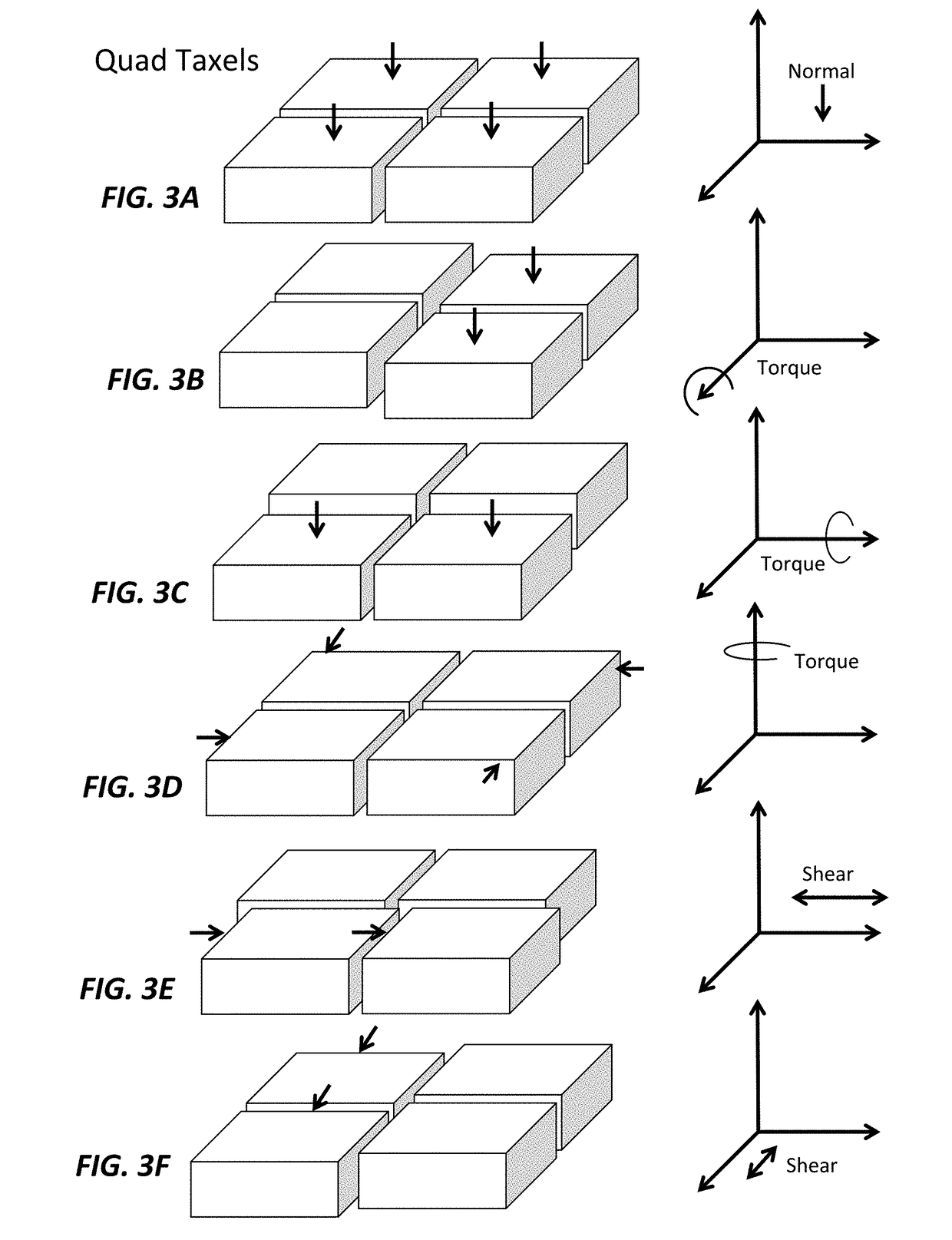Capacitive Force/Torque Sensor
a technology of torque sensor and capacitive force, which is applied in the direction of force measurement, force/torque/work measurement apparatus, instruments, etc., can solve the problems of inability to achieve onboard sensing, inability to design into, and difficulty in robots to know when they have achieved reliable grips
- Summary
- Abstract
- Description
- Claims
- Application Information
AI Technical Summary
Benefits of technology
Problems solved by technology
Method used
Image
Examples
Embodiment Construction
[0019]A capacitive force sensor that mechanically decouples normal and shear forces is provided herein. The current invention can not only achieve high sensitivity in normal and shear force directions but also provides a greater design freedom in the spatial placement and distribution of different sensing elements. This allows for the creation of a thin and robust 6 degree-of-freedom (DOF) capacitive force sensor capable of sensing forces in 3 directions (x, y, z) and moments about 3 directions (x, y, z). The present invention provides a capacitive tactile sensor that presents a good solution to the problems in existing sensors, as it offers high performance at a low cost. The sensor design makes it robust to external impacts and force overloads offer a big advantage over existing force / torque sensing solutions.
[0020]Capacitance between parallel plates is given by
C=ɛAd,(1)
[0021]where ε is the dielectric constant and A and d are the plate area and separation respectively. For a paral...
PUM
 Login to View More
Login to View More Abstract
Description
Claims
Application Information
 Login to View More
Login to View More - R&D
- Intellectual Property
- Life Sciences
- Materials
- Tech Scout
- Unparalleled Data Quality
- Higher Quality Content
- 60% Fewer Hallucinations
Browse by: Latest US Patents, China's latest patents, Technical Efficacy Thesaurus, Application Domain, Technology Topic, Popular Technical Reports.
© 2025 PatSnap. All rights reserved.Legal|Privacy policy|Modern Slavery Act Transparency Statement|Sitemap|About US| Contact US: help@patsnap.com



